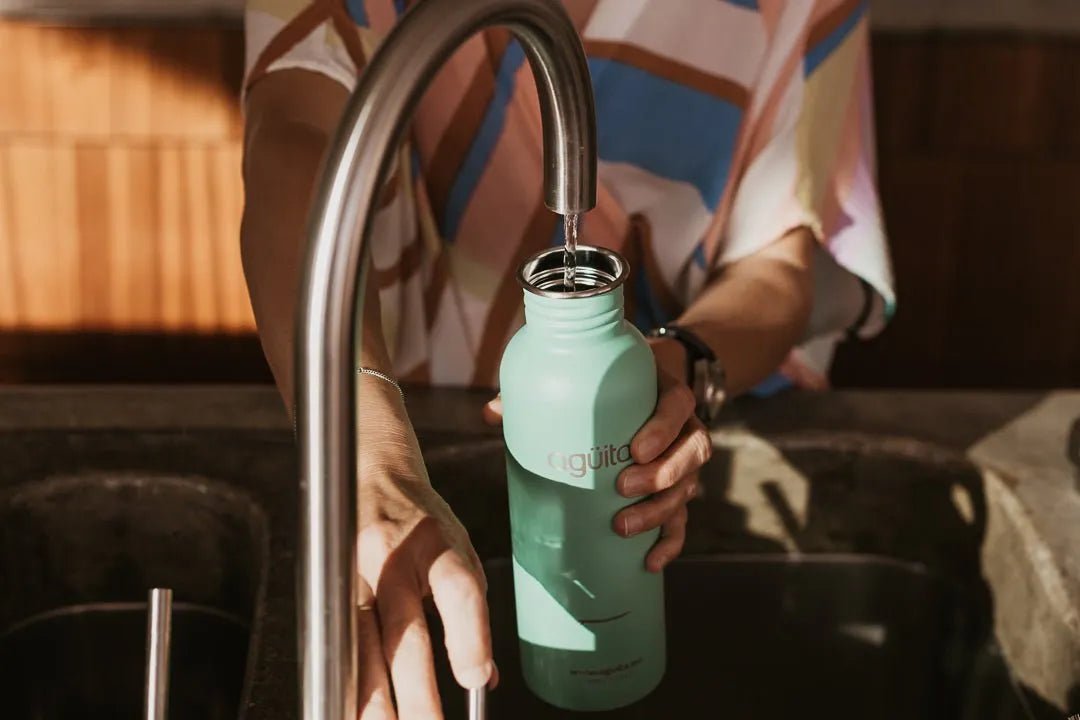Here's Your Sneak Peek:
- Stainless Steel Swag: Uncover the charisma of stainless steel in the world of reusable bottles.
- The Mystery League: Bamboo, wood, and organic plastic—why are they the enigmas of European kitchens?
- Glassware Glam: The reason glass is the queen of European table settings.
- Ceramic Chic: How ceramic wears the crown of elegance and compliance.
- EU Safety Net: The regulations that keep your kitchenware up to snuff.

Stainless Steel: The Heavy Hitter of Reusables
Why Stainless Steel is the Material to Beat
Stainless steel—sleek, strong, and the superstar of reusables. If kitchenware had a hall of fame, stainless steel would have its own wing. Especially popular for reusable water bottles in Europe, its merits are well-documented, including in a report by Grand View Research.
What Makes Stainless Steel Stand Out?
| Quality | Benefit |
|---|---|
| Durability | Built to last a lifetime |
| Eco-Friendly | Helps you go green |
| Customizable | Make it uniquely yours |
Our Agüita's double-wall water bottles are a shining example of stainless steel's versatility. Not just reusable, they're also customizable. So you're not just buying a bottle; you're making a statement.
Curious Corner: For an even deeper dive into materials, explore our comprehensive guide to water bottles.

The Mystery League: Bamboo, Wood, and Organic Plastic
The Uncharted Territories
Bamboo, wood, and organic plastic are like the Bermuda Triangle of European kitchenware—discussed but not seen. Could it be regulations, or are these materials just fashionably late?
Theories on Their Absence:
- Popularity: Yet to make a mainstream splash.
- Regulations: Might not meet stringent EU standards.
- Availability: Could be a supply chain issue.
Fun Fact: Planning to add a personal touch to your future bamboo kitchenware? Learn how you can personalize your drinkware right now with our personalization guide.
Glass: The Clear Choice for Europeans
Glassware: The Heart of European Dining
Glass is like the classic novel of kitchenware—timeless and universally loved. Germany and the UK lead the pack in importing glass drinkware, as shown by a market study.
Three Reasons Why Glass Reigns:
- Transparency: What you see is what you get.
- Elegance: Adds a touch of sophistication.
- Safety: Backed by European safety standards.
Glass isn't just about looks; it's also about safety. A point emphasized by Grand View Research.

Ceramic: The Artistic Soul of Kitchenware
The Ceramic Wave: Catch It If You Can!
Ceramic has been winning hearts across Europe. Nearly half of the ceramic dinnerware imports come from developing countries, according to a market report.
Ceramic’s Winning Traits:
- Aesthetic: Each piece is a work of art.
- Versatility: From plates to pitchers.
- Safety: EU laws ensure it's lead and cadmium-free.
European legislation adds another layer of comfort, ensuring that ceramic items meet stringent safety standards, as detailed by the European Commission.

The European Rulebook: A Safety Net You Can Trust
The Invisible Hand of Regulation
Let's change gears and talk about the silent hero in this story—European Union regulations. These aren't just bureaucratic hurdles; they're your guarantee that what touches your food is as safe as it gets.
The EU has a whole set of rules, but let's focus on the heavy hitters:
- General Principles: Regulation (EC) No 1935/2004 sets the general safety scene.
- Manufacturing Practices: Regulation (EC) No 2023/2006 ensures your products are made right.
- Material-Specific: Special rules that dive deep into the details of each material type.
These laws aren't just about safety; they're about trust. When you see a product that's compliant, you're looking at a product that respects you, your health, and your high standards.
So, there you have it—a whirlwind tour of Europe’s favorite kitchenware materials. Whether you're team stainless steel, intrigued by the elusive bamboo, or a fan of the classics like glass and ceramic, this guide has got you covered. Happy culinary adventures! 🍽️

